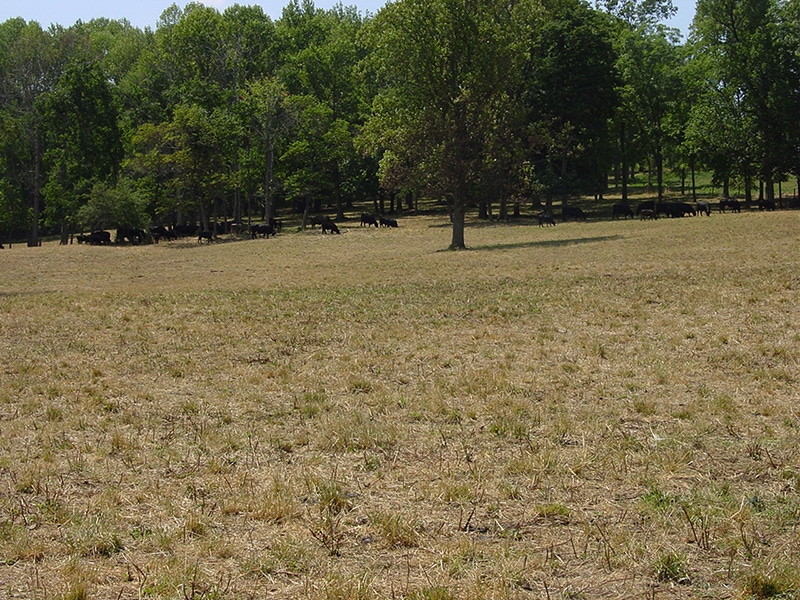Experts seek to mitigate effects of dry weather on cattle feeding
Publication outlines key management and feeding practices available for producers.
June 22, 2023

An impending drought caused by lower-than-average rainfall in the spring and summer seasons could result in inadequate forage yield for cattle producers in some parts of the U.S.
A timely publication from Purdue University Extension, Agronomy and Animal Sciences titled “When Forages Are in Short Supply Because of Drought” outlines key management and feeding practices available for producers to reduce the negative consequences of low forage supplies.
The authors – Keith Johnson, professor of agronomy and Extension forage specialist; Ron Lemenager, professor of animal sciences and Extension beef specialist; and Nick Minton, Extension beef systems specialist – offer a methodical analysis of the factors driving drought and a checklist to navigate the various impacts on herd health, including nitrate poisoning.
By discussing 18 vital producer tools in the article – such as providing supplemental feeding, known as creep feeding, to calves to obtain near normal weaning weights – the authors seek to help ensure cow production.
Lemenager says of Indiana, “We had a warm spell in February across much of the state and forages broke dormancy, and then it turned cool again, which set the growth curve back until early May.”
He details his experiences speaking with producers across Indiana, saying: “Many have experienced drier than normal weather. Coupled with usual or above average summertime temperatures, many are concerned about the possibility of lingering droughtlike conditions. I’m hearing stories of first-cutting hay yields being anywhere from 30% to 90% of normal.”
The Extension specialists highly recommend that producers scout their pastures to see what forage is truly available for grazing. They share that the cool-season grasses have set seed heads, and from the road there appears to be adequate growth, but the leaf material available for grazing may be inadequate to support normal animal performance.
Lemenager adds, “Producers need to avoid overgrazing, which will negatively affect plant regrowth and total tonnage of forage for the remainder of this grazing season.”
Offering feed insights, Johnson explains, “Unfortunately, there are no cheap, easy fixes for beef producers who have both short pastures and limited hay supplies. Good management means beef producers should develop and implement a strategy that specifies what to do with pastured animals and where winter feed supplies will come from, long before the last blade of grass or bale of hay disappears.”
Minton elaborates, “Taking the approach of just feeding them some form of concentrated feedstuff may be an unwise approach provided continued elevated feed prices even in the presence of a strong cattle market. Know what it will cost to produce a pound of gain or to maintain body weight before filling the feed bucket.”
You May Also Like


.png?width=300&auto=webp&quality=80&disable=upscale)
